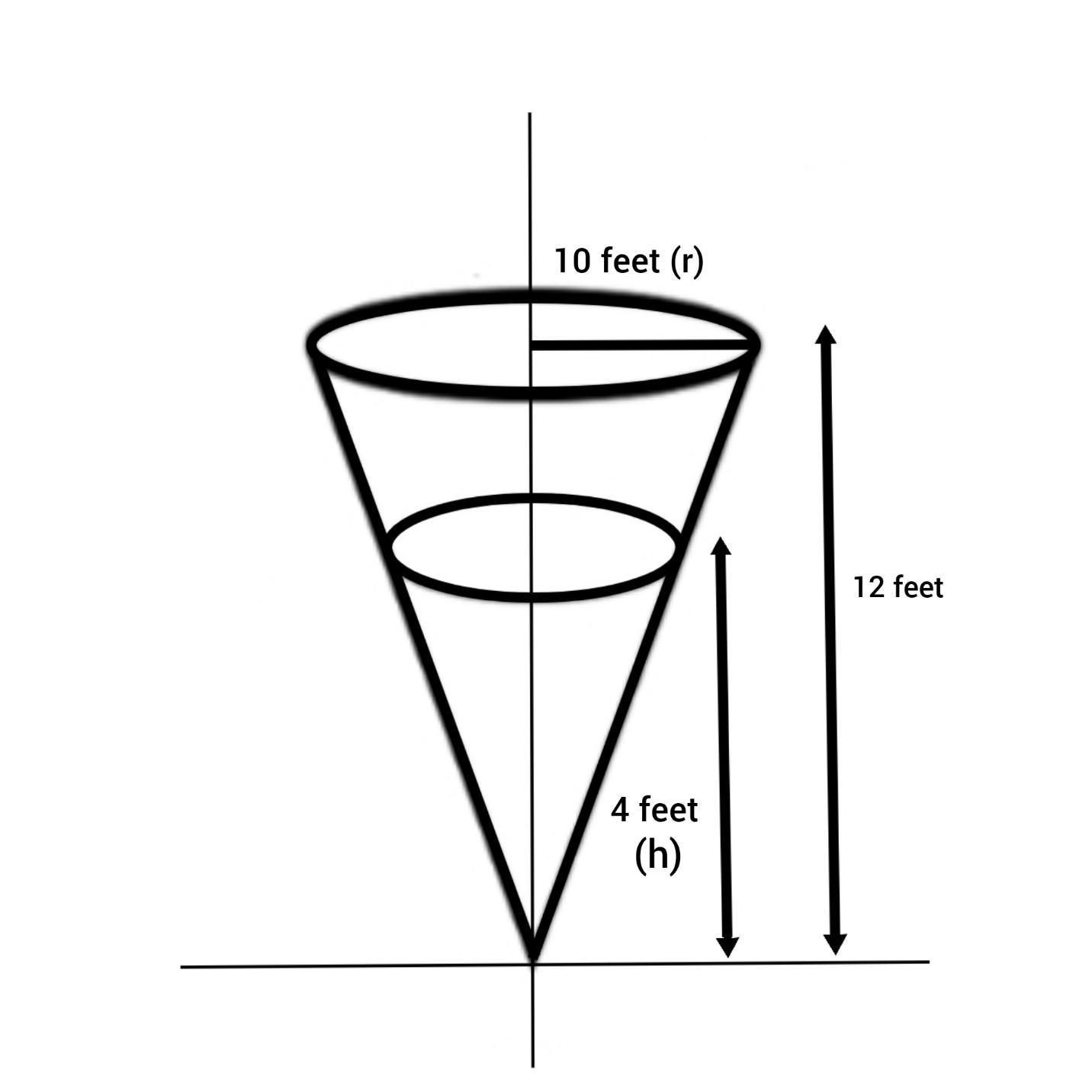
A conical tank (with vertex down) is
Answer
397.5k+ views
Hint: In this question,we need to find the rate of change of the depth of the water when the water is
Formula used:
The volume of the cone ,
Where
Derivative rule used :
Complete step-by-step answer:

Let us consider the radius of the tank to be
Given, the conical tank is
By relating the radius
Thus
We know volume of the cone is
By substituting
We get,
On simplifying,
We get,
On differentiating
We get,
Also given the rate change of volume is
By substituting the value of volume rate,
We get,
We need to find the rate of change of the depth of the water when the water is
By substituting the value of
We get,
On simplifying,
We get,
On multiplying the term inside,
We get,
By rewriting the terms,
We get,
On simplifying,
We get
Thus we get the rate of change of the depth of the water is approximately
Final answer :
The rate of change of the depth of the water is approximately
Note: Mathematically , Derivative helps in solving the problems in calculus and in differential equations. The derivative of
Formula used:
The volume of the cone ,
Where
Derivative rule used :
Complete step-by-step answer:

Let us consider the radius of the tank to be
Given, the conical tank is
By relating the radius
Thus
We know volume of the cone is
By substituting
We get,
On simplifying,
We get,
On differentiating
We get,
Also given the rate change of volume is
By substituting the value of volume rate,
We get,
We need to find the rate of change of the depth of the water when the water is
By substituting the value of
We get,
On simplifying,
We get,
On multiplying the term inside,
We get,
By rewriting the terms,
We get,
On simplifying,
We get
Thus we get the rate of change of the depth of the water is approximately
Final answer :
The rate of change of the depth of the water is approximately
Note: Mathematically , Derivative helps in solving the problems in calculus and in differential equations. The derivative of
Recently Updated Pages
Master Class 9 General Knowledge: Engaging Questions & Answers for Success

Master Class 9 English: Engaging Questions & Answers for Success

Master Class 9 Science: Engaging Questions & Answers for Success

Master Class 9 Social Science: Engaging Questions & Answers for Success

Master Class 9 Maths: Engaging Questions & Answers for Success

Class 9 Question and Answer - Your Ultimate Solutions Guide

Trending doubts
State and prove Bernoullis theorem class 11 physics CBSE

What are Quantum numbers Explain the quantum number class 11 chemistry CBSE

Who built the Grand Trunk Road AChandragupta Maurya class 11 social science CBSE

1 ton equals to A 100 kg B 1000 kg C 10 kg D 10000 class 11 physics CBSE

State the laws of reflection of light

One Metric ton is equal to kg A 10000 B 1000 C 100 class 11 physics CBSE




